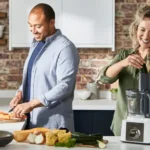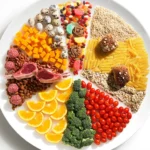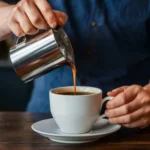Coffee is more than just a beverage; it’s a ritual, a moment of calm, a source of energy, and for many, a daily necessity. Brewing the perfect cup of coffee is both an art and a science. Whether you’re a casual drinker or a dedicated enthusiast, understanding the nuances of brewing can transform your coffee experience from ordinary to extraordinary.
In this comprehensive guide, we will walk you through everything you need to know to brew the perfect cup of coffee every time — from selecting the right beans to mastering various brewing methods, water quality, grind size, and even storage tips. By the end, you’ll have the tools and knowledge to consistently enjoy a coffee cup tailored to your taste preferences.
Understanding Coffee Beans: Types and Roasts
The foundation of any great cup of coffee starts with the beans.
Coffee Bean Varieties
- Arabica: Known for its smooth, complex flavors with hints of fruit and acidity. Arabica beans account for about 60-70% of global coffee production.
- Robusta: Stronger, more bitter, and higher in caffeine. Often used in espresso blends for added crema and body.
Roast Levels
The roast level dramatically affects the flavor profile of your coffee:
| Roast Level | Flavor Profile | Characteristics |
|---|---|---|
| Light | Fruity, floral, acidic | Retains original bean flavors, higher acidity |
| Medium | Balanced, nutty, caramel | Well-rounded, sweeter, moderate acidity |
| Dark | Bold, smoky, bitter | Reduced acidity, strong and robust flavor |
Choosing the right bean and roast depends on your taste preference and brewing method.
Importance of Water Quality and Temperature
Since coffee is 98-99% water, the quality and temperature of the water used is crucial.
- Water Quality: Use filtered or bottled water to avoid off-flavors from chlorine or minerals.
- Temperature: The ideal brewing temperature is between 195°F and 205°F (90°C – 96°C). Too hot and the coffee tastes burnt; too cool and it’s under-extracted and sour.
Grinding Coffee: Why Size Matters
Grinding controls extraction — the process where water dissolves flavors from coffee grounds.
| Grind Size | Suitable Brewing Methods | Extraction Speed |
|---|---|---|
| Coarse | French Press, Cold Brew | Slow |
| Medium-Coarse | Chemex, Clever Dripper | Moderate |
| Medium | Drip Coffee Makers, Pour Over | Balanced |
| Medium-Fine | AeroPress (with short brew time), Siphon | Faster |
| Fine | Espresso, Moka Pot | Fast |
| Extra Fine | Turkish Coffee | Very Fast |
Freshly ground beans yield the best flavor; grind just before brewing.
Different Brewing Methods Explained
Different methods produce different flavor profiles, strengths, and body. Here are the most popular ones:
- Drip Coffee Maker: Convenient and consistent, perfect for large batches.
- Pour Over (e.g., Hario V60): Gives control over extraction; produces a clean, bright cup.
- French Press: Immersive method yielding a rich, full-bodied cup.
- Espresso Machine: Concentrated and intense coffee; base for lattes and cappuccinos.
- AeroPress: Versatile and fast, produces a smooth and strong coffee.
- Cold Brew: Slow steeping in cold water results in a smooth, less acidic drink.
Step-by-Step Brewing Guide for Popular Methods

Pour Over Coffee
- Heat water to 200°F (93°C).
- Place a filter in the dripper and rinse with hot water.
- Add medium grind coffee (about 1g coffee to 16g water).
- Bloom the coffee by pouring a small amount of water and letting it sit for 30 seconds.
- Slowly pour the remaining water in circular motions until desired amount is reached.
- Let coffee drip through completely, then serve.
French Press
- Add coarse ground coffee (about 1:15 coffee to water ratio).
- Pour hot water (200°F/93°C) over grounds.
- Stir gently and place lid with plunger pulled up.
- Steep for 4 minutes.
- Press plunger down slowly and pour immediately.
Coffee to Water Ratio: Getting It Just Right
The strength of your coffee depends on the coffee-to-water ratio.
| Coffee to Water Ratio (by weight) | Resulting Strength | Recommended Use |
|---|---|---|
| 1:15 | Strong | French Press, Espresso |
| 1:16 to 1:17 | Balanced | Drip, Pour Over |
| 1:18 to 1:20 | Milder | Light coffee, Cold Brew |
Adjust according to taste. Too strong can be bitter; too weak, watery.
Tips for Enhancing Your Coffee Flavor
- Fresh Beans: Always buy whole beans and use within 2-3 weeks of roast date.
- Proper Storage: Keep beans in an airtight container away from light and heat.
- Water-to-Coffee Consistency: Use a kitchen scale for precision.
- Experiment: Adjust grind size, brew time, and ratios to find your ideal taste.
- Use a Timer: Especially for immersion or pour-over methods to control extraction.
Common Brewing Mistakes to Avoid
- Using old or pre-ground coffee.
- Brewing with water that is too hot or too cold.
- Not cleaning your coffee equipment regularly.
- Ignoring grind size for your brewing method.
- Over-extracting by brewing too long or with too fine a grind.
- Using incorrect coffee-to-water ratio.
How to Store Coffee Beans for Maximum Freshness
Proper storage extends the life of your beans and preserves flavor.
| Storage Method | Description | Pros | Cons |
|---|---|---|---|
| Airtight Container | Keeps air and moisture out | Maintains freshness | Needs to be opaque |
| Vacuum-Sealed Bags | Removes air, best for long-term storage | Maximizes shelf life | Must reseal properly |
| Refrigerator | Not recommended due to moisture | Keeps cool | Can introduce moisture/flavors |
| Freezer | Acceptable for long-term but not daily use | Good for months | Thaw before use, avoid moisture |
Specialty Additions: Milk, Sweeteners, and Spices
Personalize your coffee by experimenting with additions.
- Milk & Cream: Choose whole milk for creaminess, almond or oat milk for dairy-free options.
- Sweeteners: Natural options like honey, maple syrup, or brown sugar add complexity.
- Spices: Cinnamon, nutmeg, or cardamom can add warmth and depth.
Coffee Equipment Maintenance

Regular maintenance ensures consistent flavor and extends the life of your equipment.
| Equipment | Cleaning Frequency | Recommended Cleaning Method |
|---|---|---|
| Coffee Maker | After every use | Run hot water cycle, clean removable parts |
| Espresso Machine | Weekly deep clean | Backflush with cleaning solution |
| Grinder | Monthly or more often | Brush out grounds, wipe with dry cloth |
| French Press | After every use | Disassemble and wash all parts thoroughly |
ALSO READ: How to Write Engaging Recipe Posts That Readers Love?
Conclusion
Mastering the art of brewing the perfect cup of coffee is a rewarding journey. From selecting the freshest beans to dialing in your grind size, water temperature, and brew method, every step influences the final flavor.
Remember, coffee brewing is personal—what works perfectly for one may not for another. Use this guide as a foundation, experiment boldly, and most importantly, savor the process as much as the cup.
Whether you’re waking up to a strong espresso or relaxing with a smooth pour-over, you now have the tools to brew coffee like a pro every time. Your perfect cup is just a few steps away—happy brewing!







